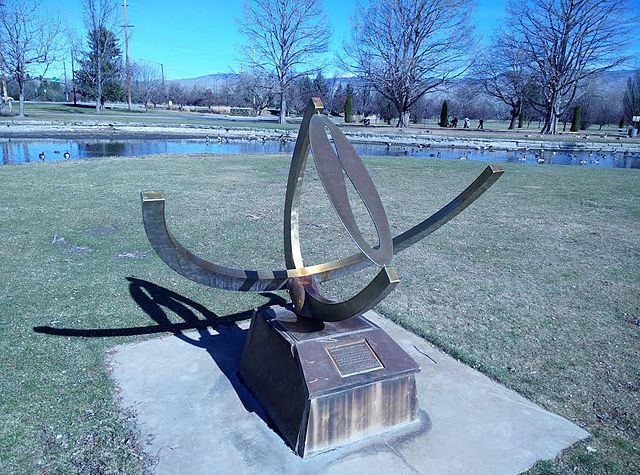The Solarium Augusti or Horologium Augusti was a monument in the Campus Martius of ancient Rome constructed in 10 BCE under the Roman emperor Augustus. It included an Egyptian obelisk that had first been erected under the pharaoh Psamtik II used in some fashion as a gnomon. Once believed to have been a massive sundial, it is now more commonly understood to have been used with a meridian line used to track the solar year. It served as a monument of Augustus having brought Egypt under Roman rule and was also connected with the Altar of Augustan Peace commemorating the Pax Romana established by his ending the numerous civil wars that ended the Roman Republic. The Solarium was destroyed at some point during the Middle Ages. Its recovered obelisk is now known as the Obelisk of Montecitorio.
Part of the meridian under the cellar of a stable building in the Campus Martius.
A sundial is a horological device that tells the time of day when direct sunlight shines by the apparent position of the Sun in the sky. In the narrowest sense of the word, it consists of a flat plate and a gnomon, which casts a shadow onto the dial. As the Sun appears to move through the sky, the shadow aligns with different hour-lines, which are marked on the dial to indicate the time of day. The style is the time-telling edge of the gnomon, though a single point or nodus may be used. The gnomon casts a broad shadow; the shadow of the style shows the time. The gnomon may be a rod, wire, or elaborately decorated metal casting. The style must be parallel to the axis of the Earth's rotation for the sundial to be accurate throughout the year. The style's angle from horizontal is equal to the sundial's geographical latitude.

SSW facing, vertical declining sundial on the Moot Hall in Aldeburgh, Suffolk, England. The gnomon is a rod that is very narrow, so it functions as the style. The Latin motto loosely translates as "I only count the sunny hours."
A horizontal dial commissioned in 1862, the gnomon is the triangular blade. The style is its inclined edge.
A combined analemmatic-equatorial sundial in Ann Morrison Park in Boise, Idaho, 43°36'45.5"N 116°13'27.6"W
Bowstring sundial in Singapore Botanic Gardens. The design shows that Singapore is located almost at the equator.





